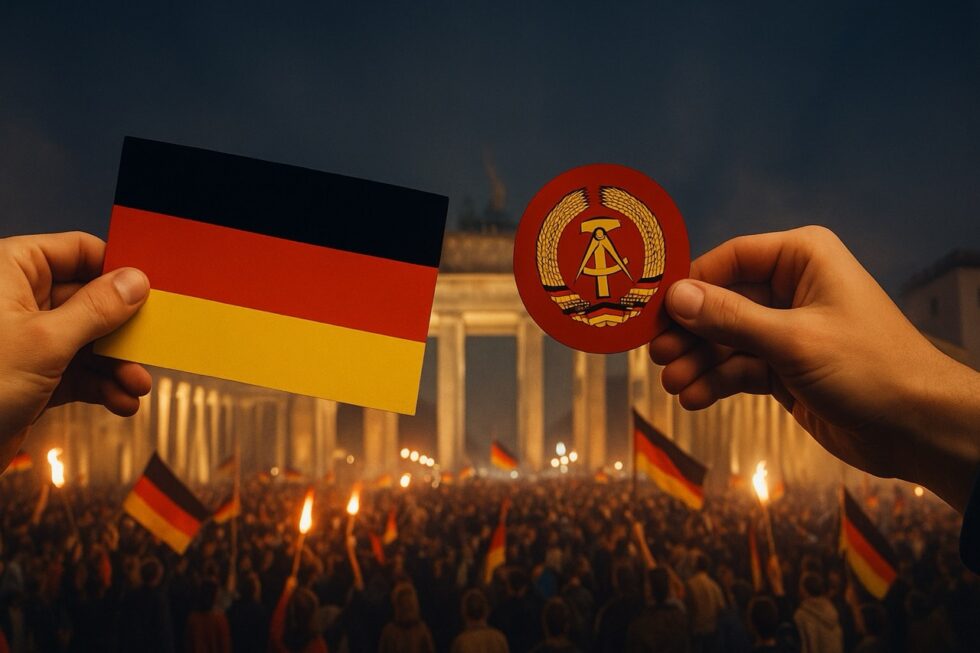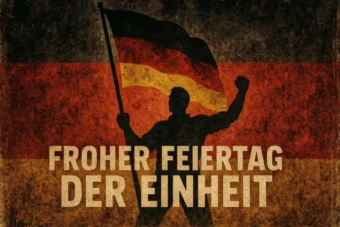October 3: What Germany Teaches Us 35 Years After Reunification

Thirty-five years after the German Democratic Republic (GDR) formally acceded to the Federal Republic of Germany (FRG) on 3 October 1990, Germany stands as a consolidated democracy and one of the world’s leading industrial nations. The Tag der Deutschen Einheit (Day of German Unity) is more than a ceremonial occasion; it is the only nationwide public holiday across all 16 federal states and a milestone in the political transformation of post-war Europe. This historic milestone and its ongoing impact are reported by G.Business.
The choice of date was deliberate. On 31 August 1990, the Unification Treaty was signed and ratified by both German parliaments, setting 3 October as the formal accession day. It replaced 17 June — previously commemorated as the Day of German Unity in honour of the 1953 East German uprising — as the national holiday.
The political architecture of reunification was secured through the Two Plus Four Agreement, concluded between the two German states and the four World War II Allied powers (USA, USSR, UK, France) in September 1990. This agreement granted Germany full sovereignty, confirmed its post-war borders (including the Oder–Neisse line with Poland), and anchored the unified country in NATO and the European Community.
Achievements – tangible results of a historic integration process
Political consolidation
The rapid incorporation of the five new federal states into West Germany’s federal system was achieved within months. Democratic institutions, independent courts, and local administrations were established on the West German model, creating political stability that matched that of the older Länder.
Infrastructure transformation
Between 1991 and 2020, more than €350 billion was invested in modernising roads, railways, utilities, and telecommunications in the East. Projects such as the A20 motorway, upgraded ICE high-speed rail lines, and the restoration of historic city centres in Leipzig, Dresden, Weimar, and Görlitz reshaped the economic and cultural landscape.
Economic renewal
After the collapse of much of the GDR’s industry in the early 1990s, new economic clusters emerged. “Silicon Saxony” around Dresden is now a European semiconductor hub; Leipzig has become a major logistics centre; and Jena is recognised for optics and medical technology. The East’s share of Germany’s GDP rose from around 6% in 1991 to about 15% today.
International role
Reunification transformed Germany’s global position, turning it from a front-line state of the Cold War into a central integrator in European politics, with greater influence in the EU and on the global stage.
Unresolved challenges – the long-term legacy of division
Economic gap
GDP per capita in the East remains about 20% lower than in the West. Fewer corporate headquarters, lower capital accumulation, and the migration of skilled workers have slowed economic convergence.
Income and wealth disparity
Average monthly wages in the East are roughly €600 lower than in the West. Median household wealth is about one-third of that in western Germany — a legacy of the absence of private capital accumulation in the GDR and smaller inheritance transfers.
Demographic strain
Some eastern regions have lost up to 25% of their population since 1990, particularly young people moving to western cities. This has led to ageing populations, school closures, shortages of medical professionals, and reduced economic activity in rural areas.
Political polarisation
Populist parties achieve significantly higher electoral results in several eastern states — often 25–35% — reflecting both protest against federal policies and perceptions of structural disadvantage.
Why October 3 is more than a holiday
October 3 symbolises the conclusion of a unique historical process: the peaceful revolution in East Germany in 1989, the fall of the Berlin Wall, and, less than a year later, the political, legal, and economic unification of two states with radically different systems.
It represents the external unity — common institutions, laws, and currency — which was achieved with unprecedented speed. But it also highlights the unfinished task of internal unity: aligning living standards, opportunities, values, and perceptions between East and West. Historians and political scientists see this as an ongoing generational challenge for Germany’s future.
October 3 in everyday life – what’s open and what’s closed
As the only nationwide public holiday, October 3 is uniformly observed in all 16 federal states. Most public and commercial life is paused under federal and state holiday laws.
Closed:
- Government offices (town halls, registration offices, immigration offices, vehicle registration, job centres)
- Schools, kindergartens, universities (administration)
- Bank branches and insurance offices (online services and ATMs remain operational)
- Post offices (no regular mail delivery)
- Retail shops, supermarkets, and shopping malls (except certain travel-related outlets)
- Municipal services such as waste collection (usually postponed by one working day)
Open:
- Restaurants, cafés, and bars (opening hours at owners’ discretion)
- Museums, exhibitions, zoos, and theme parks (check holiday schedules in advance)
- Fuel stations (often with convenience stores)
- Shops in major train stations and airports (travel supplies, snacks, press)
- Bakeries (in some states allowed to open for up to three hours in the morning)
- Pharmacies on emergency duty (lists published online and displayed at closed locations)
Transport:
- Public transport operates on a Sunday/holiday timetable (reduced frequency)
- Long-distance trains and buses run with minor holiday schedule adjustments — advance booking is recommended for popular routes
- Emergency services (police, fire, ambulance) operate normally; national medical on-call service is available at 116 117 for non-life-threatening cases
October 3 is both a day of remembrance and a test of national cohesion. It commemorates a peaceful revolution, a diplomatic breakthrough, and the end of division in the heart of Europe. But it also serves as a reminder that unity is not merely the absence of borders — it is a continuous process of bridging economic, social, and cultural divides. Thirty-five years on, Germany’s external unity is complete; its internal unity remains a work in progress.
Stay connected for news that works — timely, factual, and free from opinion — and insights that matter now: Which health insurance is better in Germany 2025 — public or private, and how much does it cost

